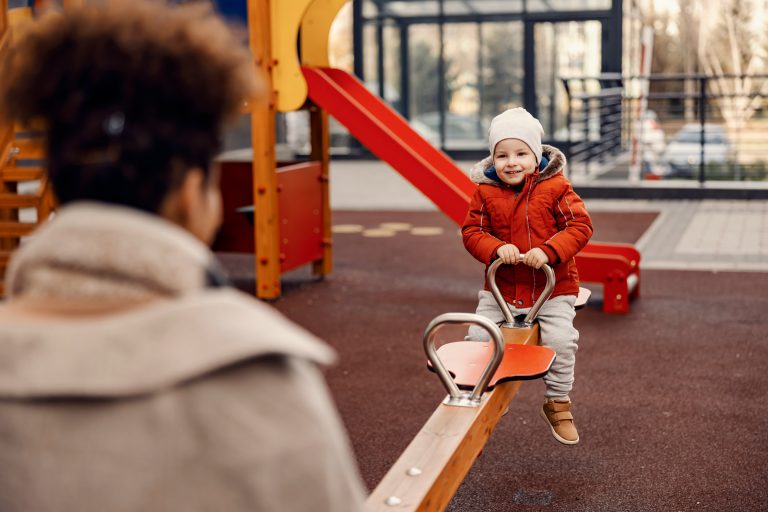Play is the universal language of childhood. It’s through play that children explore the world, develop crucial social skills, build confidence, and simply experience joy. However, for children with disabilities, accessing these fundamental benefits can often be hindered by playgrounds designed with a narrow definition of “typical” play in mind. Image Playgrounds creates spaces that cater to children of all abilities – it isn’t just a matter of fairness; it’s a fundamental investment in their development, well-being, and the fabric of our communities. This comprehensive guide explores the multifaceted importance of designing inclusive playgrounds and the profound positive impact they have on all children.
Beyond the Surface: Understanding the Need for Inclusive Design
Traditional playgrounds, often featuring equipment like swings with bucket seats and high climbing frames, can present significant barriers for children with physical, sensory, cognitive, or social-emotional differences. Steps, uneven surfaces, and activities requiring specific physical abilities can exclude a large segment of the child population, limiting their opportunities for play and social interaction. Inclusive design, on the other hand, proactively considers the diverse needs and abilities of all children, ensuring that everyone can participate and benefit from the play environment.
Fostering Social Inclusion and Reducing Isolation:
One of the most profound benefits of inclusive playgrounds is their ability to foster social inclusion and break down barriers between children of different abilities.
- Creating Opportunities for Interaction: When playgrounds offer a variety of accessible equipment and activities, children of all abilities can play alongside each other. This shared experience creates natural opportunities for interaction, communication, and the development of friendships.
- Breaking Down Stereotypes and Misconceptions: Inclusive play environments help children learn about and appreciate the diverse abilities and perspectives of their peers. Playing together can dismantle stereotypes and foster empathy and understanding from a young age.
- Reducing Feelings of Isolation and Exclusion: Children with disabilities can often feel isolated when they are unable to participate in activities enjoyed by their peers. Inclusive playgrounds provide a space where they feel welcome, valued, and part of the community.
- Promoting a Sense of Belonging: When all children can play together, it cultivates a stronger sense of community and belonging for everyone. This shared experience strengthens social bonds and creates a more inclusive society.
Supporting Holistic Development for All Children:
Inclusive playgrounds offer a wealth of developmental benefits that extend to all children, regardless of their abilities.
- Physical Development: Accessible ramps, wide pathways, and supportive equipment allow children with mobility challenges to engage in physical activity, building strength, coordination, and gross motor skills. Simultaneously, these features can also be enjoyed by typically developing children, offering different ways to move and explore.
- Cognitive Development: Inclusive playgrounds often incorporate elements that stimulate cognitive skills, such as problem-solving, spatial awareness, and imaginative play. Sensory-rich features like textured surfaces, musical instruments, and interactive panels can engage children with diverse learning styles and abilities.
- Social-Emotional Development: Playing together in an inclusive environment helps all children develop crucial social-emotional skills, such as cooperation, sharing, communication, empathy, and self-confidence. Navigating social interactions in a diverse setting prepares them for a more inclusive world.
- Sensory Integration: Many children, with and without disabilities, benefit from sensory play. Inclusive playgrounds often incorporate a variety of sensory experiences, such as sand and water play, tactile surfaces, visual stimuli, and auditory elements, catering to different sensory processing needs.
Creating Equitable Play Opportunities:
Designing inclusive playgrounds is fundamentally about creating equitable play opportunities for all children.
- Ensuring Equal Access: Inclusive design removes physical barriers that prevent children with disabilities from accessing play equipment and the play space itself. Ramps, accessible swings, and level surfaces ensure everyone can participate.
- Providing a Range of Play Experiences: Inclusive playgrounds offer a variety of activities that cater to different interests and abilities, ensuring that all children can find something engaging and enjoyable.
- Promoting Dignity and Independence: When children with disabilities can access and participate in play independently, it fosters a sense of dignity, accomplishment, and self-reliance.
- Challenging Assumptions: Inclusive design challenges the traditional notion of what “typical” play looks like, recognising and valuing the diverse ways in which children engage with their environment.
The Benefits Extend to Parents and Caregivers:
Inclusive playgrounds not only benefit children but also have a positive impact on their parents and caregivers.
- Increased Opportunities for Social Interaction: Inclusive playgrounds provide a space where parents and caregivers of children with and without disabilities can connect, share experiences, and build support networks.
- Reduced Stress and Isolation: For parents of children with disabilities, finding accessible and welcoming play spaces can be a challenge. Inclusive playgrounds alleviate this stress and reduce feelings of isolation.
- Opportunities for Shared Family Fun: Inclusive playgrounds allow families with children of varying abilities to enjoy outdoor play together, creating positive shared experiences.
Key Principles of Inclusive Playground Design:
Creating truly inclusive playgrounds requires a thoughtful and holistic approach based on key design principles:
- Equitable Use: The design should be useful and marketable to people with diverse abilities.
- Flexibility in Use: The design accommodates a wide range of individual preferences and abilities.
- Simple and Intuitive Use: Use of the design is easy to understand, regardless of the user’s experience, knowledge, language skills, or current concentration level.
- Perceptible Information: The design communicates necessary information effectively to the user, regardless of ambient conditions or the user’s sensory abilities.
- Tolerance for Error: The design minimises hazards and the adverse consequences of accidental or unintended actions.
- Low Physical Effort: The design can be used efficiently and comfortably, and with a minimum of fatigue.
- Size and Space for Approach and Use: Appropriate size and space is provided for approach, reach, manipulation, and use regardless of the user’s body size, posture, or mobility.
These principles translate into specific design features such as:
- Ramps and Accessible Pathways: Ensuring smooth, level access to all areas of the playground.
- Transfer Stations: Allowing individuals using wheelchairs or mobility devices to easily transfer onto play equipment.
- Sensory Play Elements: Incorporating a variety of textures, sounds, sights, and smells.
- Adaptive Swings: Providing supportive seating options for children with limited core strength.
- Ground-Level Play Features: Offering engaging activities that can be accessed without climbing.
- Quiet Zones: Creating designated areas for children who may become overstimulated.
- High-Contrast Colours and Visual Cues: Aiding children with visual impairments.
Moving Towards a More Inclusive Future:
Designing inclusive playgrounds is not just a trend; it’s a fundamental shift towards creating more equitable and enriching environments for all children. By embracing the principles of inclusive design, we can build play spaces that celebrate diversity, foster understanding, and empower all children to reach their full potential through the joy of play. Investing in inclusive playgrounds is an investment in a more inclusive and compassionate future for our communities. It’s about building bridges, not barriers, and ensuring that the universal language of play truly speaks to everyone.


